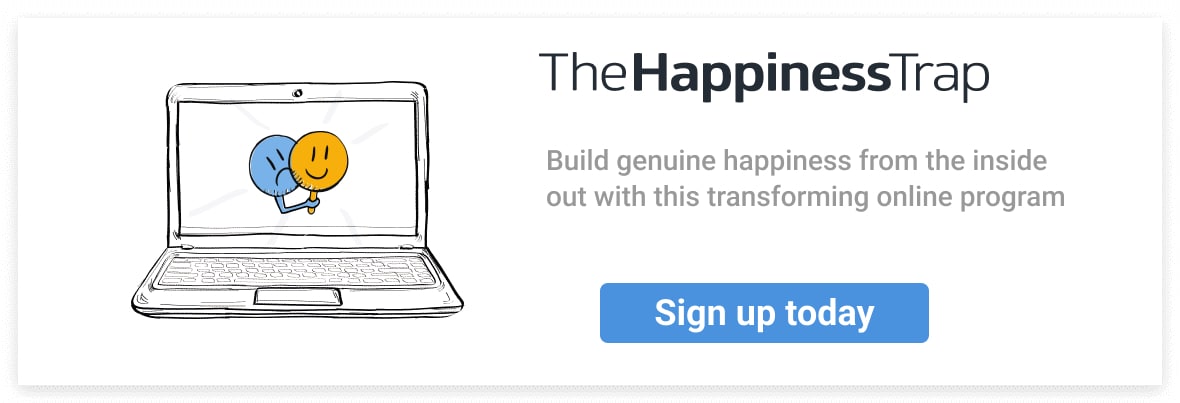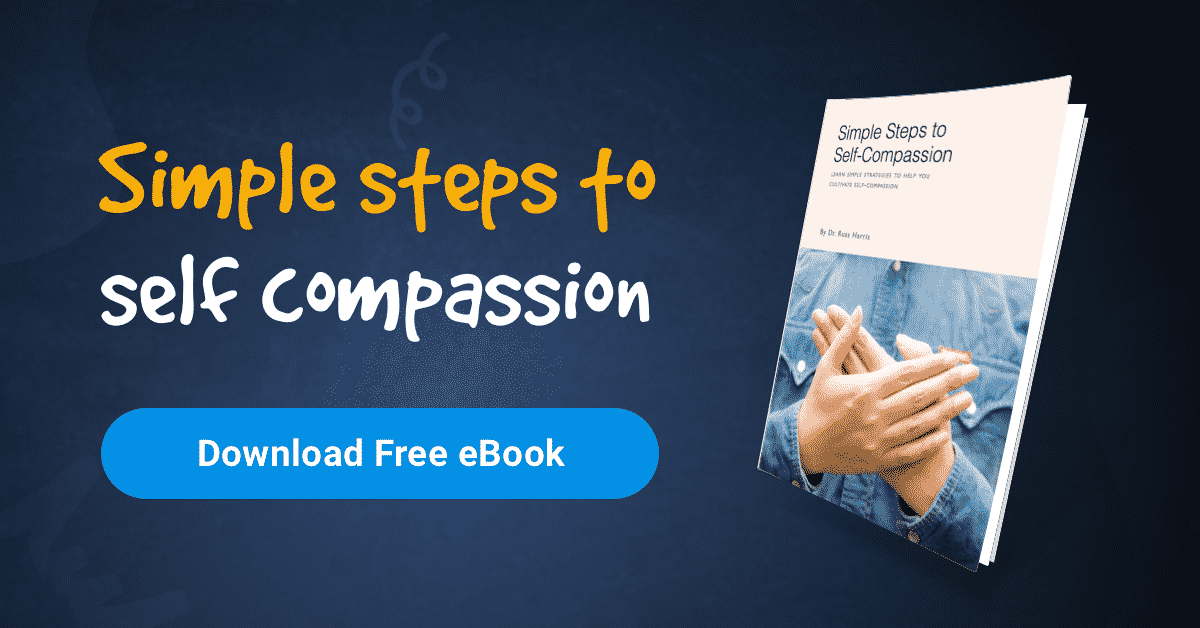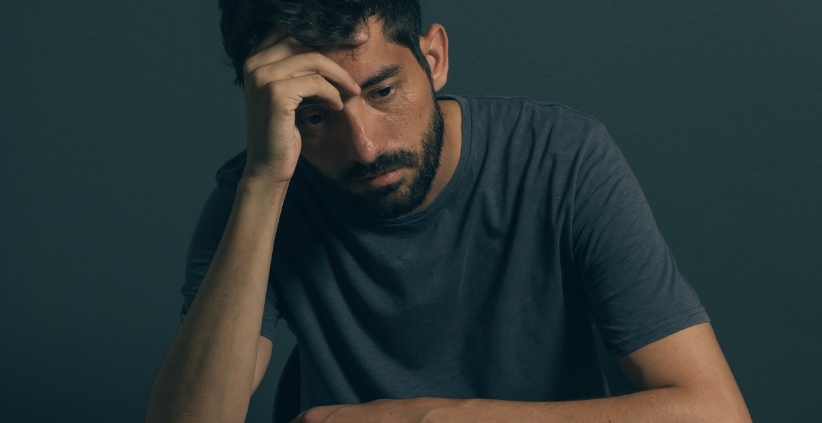Riding a Wild Stallion – Extract from The Confidence Gap by Dr. Russ Harris
You step on to the front porch of your farm house. You feel the warm caress of the morning sun.
You stretch your arms wide and breathe in the fresh spring air. Then something on the horizon catches your eye. A shape in the distance, moving very quickly.
You rub your eyes, not quite sure if you are dreaming. But no, it’s real. You dash back inside, grab your binoculars, dash back out.
Raise them to your eyes. And there it is: a magnificent beast, thundering across the plain, powerful muscles rippling beneath a coat of pure black hair.
But it’s not one of your own horses. It’s a wild stallion. And somehow it has found its way on to your property. So, what do you do?
Fear is like a wild stallion. If we know how to harness its energy, we can use it to our advantage.
But if we don’t know how to handle it, we’re in trouble. Imagine approaching a wild stallion without some good horse-wrangling skills: you’d get kicked, bitten or trampled, and waste a lot of time and energy for no useful outcome.
On the other hand, if you’re a skilled horse-whisperer, then you can approach that horse safely. And over time, if you treat it well, you can build a good relationship with it and eventually ride it.
Now, I have to admit I know absolutely nothing about handling horses. But I do know quite a lot about handling fear. So, I’m going to show you how to become a ‘fear-whisperer’.
The ABC of Fear-Whispering
There’s a simple ABC formula for fear whispering. When fear shows up, we: allow it, befriend it and channel it.
Allow It
Think of that wild stallion racing around. If you ever want to make use of its awesome strength, speed and stamina, you first have to allow it to stay on your ranch. And the same goes for fear.
There is a huge amount of energy within our fear. Remember, the fight-or-flight response evolved over hundreds of millions of years to prepare our bodies for action.
Fear gives us sharpened reflexes, increased muscle tone, heightened awareness and greater strength. It’s like a potent fuel. But we’ll never learn how to use that fuel if we’re not willing to handle it.
Once you learn how to ‘allow’ your fear: you notice, acknowledge and make room for it. After allowing, the next step is to…
Befriend It
If you want to tame that wild horse, allowing it to stay on your ranch is not enough. You have to build a positive relationship with it; you have to win its trust.
How do you do that? Well, from what I’ve seen in the movies, you approach it cautiously, and talk softly and gently, get closer and closer, and then offer it some tasty food, and if it lets you, stroke its flank, keep talking calmly and soothingly, and show it that you’re a friend, not a threat.
Note: we do have to be careful when comparing horses with fear, because horses can seriously injure or even kill you. In contrast, fear is totally harmless.
The worst it can do is make us feel very uncomfortable but that aside, the comparison is useful: if we want to use our fear to our advantage, allowing it isn’t enough; we need to befriend it.
Now, at this point your mind may start protesting, ‘But I don’t like this feeling!’ Rest assured: you don’t have to like it.
Let’s suppose there is a lonely old man in your neighborhood, and I offer to pay you ten billion dollars to befriend him.
And let’s suppose this man has some unusual habits; he is prone to angry outbursts of abusive comments, wears filthy clothes and totally neglects his personal hygiene.
So, you really don’t like him. And yet … there’s ten billion dollars at stake here. Would you make the effort to befriend him, even if you didn’t like him? For ten billion dollars, I’m sure you would!
So, what about fear? If befriending it helps you to live by your values, achieve your goals, perform at your peak, develop genuine confidence and generally live a richer, fuller, more meaningful life, then will you make the effort, even though you don’t like it?
Befriending our fear is just like befriending a person or a horse.
Friendliness involves being pleasant, welcoming, affectionate, trusting collaborative and helpful. Does this sound like a tall order? Maybe it is, but I encourage you to give it a try and see what happens.
Be pleasant and welcoming to your fear. It may seem very weird, but try talking to it (making sure to keep a strong sense of humour).
You might say, ‘Hello, fear. How thoughtful of you to drop by today. Come on in and make yourself at home. What do you want to do today? Oh, you want to give my heart a bit of a work-out, do you?
Please, do be my guest. See how fast you can get it racing. Oh, you want to chase some butterflies around my stomach? Please, go for it. My house is your house.’
Obviously, you wouldn’t do something like this in the middle of an interview or a performance, because it would interfere with task-focused attention.
But there are plenty of times and places where you could try this, such as in the car, in bed, waiting in queues, during commercial breaks on TV and so on.
Be affectionate towards your fear. If you’ve got a good imagination, you could imagine shaking fear’s hand, inviting it into your body, and slipping your arm warmly around its back.
And if you’re somewhere private, then you could gently place a hand on the fear – that is, on the part of the body where you feel it most intensely – and ‘hold it gently’; let it feel the soothing warmth of your hand.
Be trusting towards your fear. It’s not out to get you. Fear evolved for a purpose: to help us handle challenging situations effectively. It alerts us to risks and threats, and readies us for action, should it be necessary. So, we’d be in big trouble if we didn’t have any.
Be collaborative with your fear. Recognise you’re ‘playing on the same team’. Don’t fight with your fear; it’s there to support you. It’s a signal; it lets you know you’re facing a challenge. So perhaps you could remind yourself,
‘This is my brain, alerting me to a challenge; this is my body getting me ready for action.’
Regard it as a teammate, not an opponent.
Be helpful towards your fear. Fear evolved to give you strength, speed, focus and stamina. So, help it to do its job. Help it to put its energy into something useful, something meaningful, something life-enhancing. In other words . . .
Channel It
Cast your mind back once more to that wild stallion. You’ve allowed it to stay and befriended it. Now what? Now you want to use it to your benefit; to saddle it up and ride it.
And so, it is with fear. You’ve allowed it, befriended it – now use it. Take a moment to notice how much energy it gives you: all that adrenaline flowing through your system. Your whole body is geared up for action.
As I mentioned earlier, many successful athlete’s, business people and stage performers don’t use the word ‘fear’ to describe those feelings they have when facing a challenge.
They often talk instead of being ‘revved’, ‘pumped’, ‘juiced’, ‘wired’ or ‘amped’. These terms all acknowledge the energising aspects of the fight-or- flight response.
So, ask yourself,
‘How can I make use of all this energy? What values-guided activities can I channel it into?’
Of course, there are situations where you can’t channel your fear into something useful.
For example, if you’re out on a first date, chatting away in a quiet bar or restaurant, there’s not much you can do with all that energy. In such an instance, you just make room for it and engage fully in the present.
However, there are plenty of times when you can make good use of your energy. For example, if you’re playing sport, being physically active or giving some sort of performance, then you can channel all this ‘fear energy’ into it.
Reminding Yourself to Use Fear
Reminding yourself to use your fear can make a huge difference at times.
Over the past few years, I’ve been giving talks and workshops in Australia, the US and Europe, to audiences varying in size from half a dozen to several thousand.
Do I feel confident about doing this? Well, most of the time, yes, I do. I certainly didn’t feel confident when I first started, but now I’ve had so much practice that I generally do.
However, when I’m speaking on a new topic, or running a brand-new type of workshop, I definitely do not feel confident. (Nor do I expect to, until I’ve done it over and over.)
But I do act with confidence: I get up on stage, give the speech or workshop and engage fully in the task.
Now here’s the thing: regardless of whether or not I feel confident, I always feel fear.
If that surprises you, let me remind you of some basic human biology: when we’re facing a genuine challenge, we’re going to have a fight-or-flight response.
So, no matter how confident we are at doing something, if the situation is challenging, we’ll feel fear. You may recall this rule:
Genuine confidence is not the absence of fear; it is a transformed relationship with fear
Thus, before I start my talk or workshop, I make room for my fear, take a deep breath, and say to myself, ‘Okay! Here we go! Let’s put this energy into action!’
The fear is still there, but my relationship with it has transformed. Now it’s not just something I need to make room for in order to get on with my life.
Now it’s something useful in its own right. It’s a potent fuel; a burst of energy that revs me up, gets me buzzing and enhances my performance.
And you can do the same thing in your life. Remind yourself regularly to channel your fear and notice the difference it makes when you do so. It may take a while to get the hang of this, but when you do, it makes a huge difference.
Indeed, over time, you may find your-self using words like ‘revved’, ‘pumped’ and ‘amped’, instead of ‘fear’ and ‘anxiety’.
And if there’s nothing for you to channel your fear into, then make room for it and engage fully in whatever you are doing.
Don’t fight your fear; allow it, befriend it and channel it.










